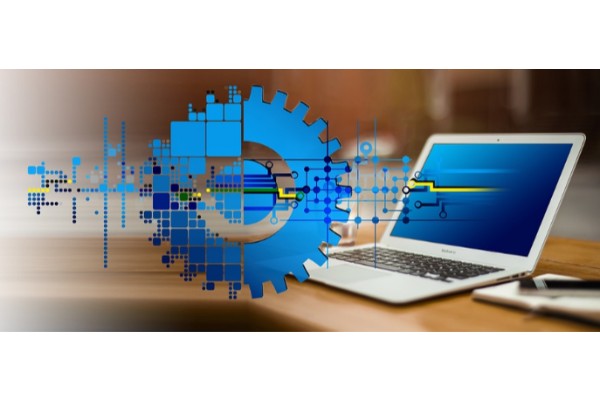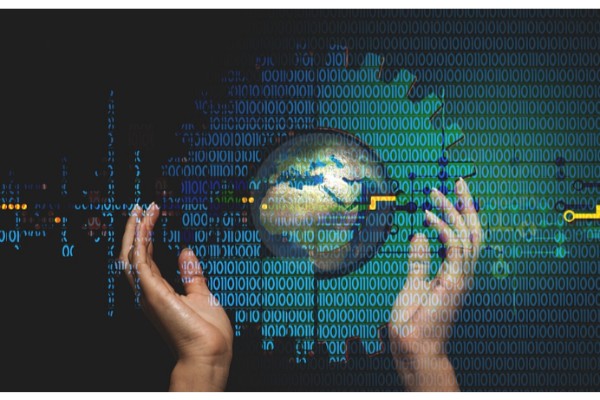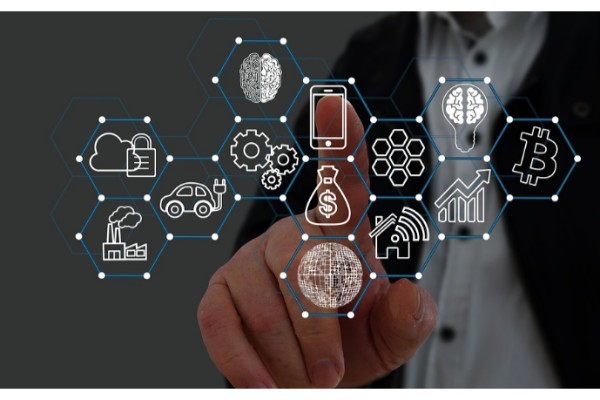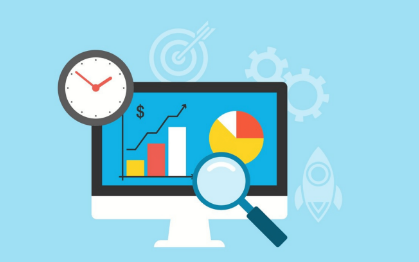Technology for smart workplaces can be overwhelming. The good news is that they produce a workplace that is effective and efficient as well as a seamless employee experience. However, what is a smart workplace? In this article, we will discuss what a smart workplace really is and its benefits.
Table of Contents
Key Elements: What is A Smart Workplace?
A recent global market research report defines the smart workplace as technologies, services, and solutions that “connect and engage,” enabling people to work better, faster, and smarter. According to the report, the smart workplace market is anticipated to grow at a 12% compound annual growth rate to reach $53 billion by 2025.
The report focuses on solutions that use sensors, the Internet of Things (IoT), software, and other connected solutions to optimize building management, including:
- Building Construction
- Lighting
- Energy management
- Heating, ventilation, and air conditioning
- Predictive maintenance
- Security
While these are all important elements, today’s smart workplaces go beyond the physical building to improve collaboration and the employee experience in a hybrid environment, including:
- Employee engagement apps
- Occupancy sensors
- Meeting room solutions
- Smart lockers
- Smart parking solutions
- Wayfinding and navigation
We’ll look more closely at how each of these applications is enhanced by smart workplace technology.
Building Construction
Building information modeling (BIM) combines 3D modeling and software with a collaborative process that enables everyone to work together on building design, construction, and maintenance. It’s a way to construct better buildings from the ground up and then use predictive analytics to maintain them.
One illustration is the Archibus Smart Client Extension, which gives facilities managers access to quantifiable data from a building so they can make informed decisions. To better understand how a building will behave in various scenarios, they can use data to create a digital twin or 3D map of the structure.
Lighting
According to one provider, intelligent lighting systems can cut energy use by up to 80%. These systems use the Internet of Things sensors to change the lighting according to occupancy, the time of day, the weather, and the season. For particular tasks, they can even change the lighting.
Based on a window’s location on the building, the time of day, and the season, smart blinds can change how much of the window is covered. Employee productivity has been shown to increase when they are seated near a window, and smart blinds make sure they aren’t overheating in the sun or suffering from screen glare.

Energy Management
In order to reduce carbon emissions and achieve sustainability objectives while controlling costs, many organizations are under increased pressure. With numerous different buildings and energy suppliers, it can be challenging to determine how much your company is spending on utilities. With the aid of energy management solutions, you can monitor expenditures in relation to your own goals and benchmark data to make improvements. You can lower your energy costs, analyze usage trends, and renegotiate rates with service providers with the aid of this smart office technology.
HVAC Technologies
The workplace’s extreme heat, cold, or discomfort brought on by other environmental factors like low humidity or poor air quality are among the most frequent complaints made by employees. Although at first glance this may not seem like a big deal, studies have shown that after just two hours in a closed-door meeting, employees’ decision-making was affected by high carbon dioxide levels.
Smart HVAC systems use sensor technology, just like intelligent lighting systems, to change the temperature based on occupancy and outside conditions. They can also keep an eye on humidity levels, air quality, and other variables to make it easier for workers to breathe.
Predictive Maintenance
While regularly scheduled preventive maintenance aids in preventing equipment downtime, lowering repair costs, and extending the life of your assets, smart workplace technology enables FMs to manage buildings and assets with even more accuracy.
To track asset utilization and identify specific conditions that foretell impending equipment failures, such as temperature, friction, and vibration, predictive maintenance uses smart workplace technology powered by IoT sensors. IoT sensors should be integrated with facility maintenance software so FMs always have access to the most recent asset utilization data. They can use this information to guide their maintenance choices and avoid unanticipated asset failures.
Security
Smart technology can help organizations protect their most valuable assets, including their employees, and can address common security challenges.
FMs can manage access to an entire building or to particular areas within it, like data centers or secured areas, thanks to advanced workplace technology like smart badging systems. In addition to defending employees from unwanted (and potentially dangerous) visitors, badge systems can also shield the business from internal or external security breaches.
IoT sensors can detect changes in temperature or humidity that could harm equipment in environments that need to be kept at a certain temperature or they can detect motion, which might be an indication of the presence of unauthorized people. Workplace management software can be connected to these smart sensors to alert key personnel so they can take the proper action.
Additionally, as more businesses implement wellness checks and contact tracing, they’re introducing touchless visitor management systems that let guests complete a brief questionnaire, scan a QR code, and notify their host without having to wait in a crowded lobby.
Employee Engagement Apps
Organizations still struggle to keep employees connected as they transition to a hybrid workplace and do away with assigned seats. In this new environment, smart workplace technology like mobile apps is gaining popularity.
In a technologically advanced workplace, these apps make it simple for staff members to locate coworkers, locations, and information. In order to make employees feel more a part of the workplace, even if they don’t visit it frequently, they can display location-based maps, announcements, menus, and more.
Occupancy Sensors
Occupancy sensors improve a variety of smart office technologies, such as software for space planning, reservations, and building maintenance.
Utilizing occupancy data, facilities managers can monitor trends over time and make any necessary changes to the office space. They might instruct the company in charge of the employee cafeteria, for instance, to serve fewer meals on particular days of the week, or they might change the size of the maintenance crews in accordance with expected occupancy.
Meeting Room Solutions
Sensors can also eliminate the problem of “false scarcity” when it comes to meeting rooms or desks. This issue arises when an employee schedules a meeting in advance but later cancels it or decides they no longer need to come into the office. When sensors and reservation software are integrated, you can design a workflow that automatically cancels a reservation if no activity is seen for a predetermined amount of time.
Having intelligent room panels that work with conference room scheduling software can also make it simpler to make last-minute reservations and collaborate.
Smart Lockers
Even if they don’t have a designated desk, employees need a place to store their belongings and receive mail deliveries. A code sent to a mobile app on a smart locker’s device is used to unlock the electronic system. This makes it simple to provide expandable storage space without having to add endless rows of new lockers, especially if your workforce is agile and includes a large number of independent contractors in addition to full-time workers.
Smart Parking Solutions
Any employee would find it frustrating to spend the first 20 minutes of the day trying to find a parking space. By enabling them to locate and reserve a parking space as easily as they can a desk for the day, smart parking solutions lessen this annoyance. Employees can access these solutions through a mobile app, which is typically powered by space management software.
Wayfinding and Navigation
Wayfinding solutions can make it simple for visitors or employees to navigate their new surroundings, whether it’s their first day at work or their first day back after a long absence. By using wayfinding, they can spend less time looking for their destination or getting directions. These programs can also show important announcements, like upcoming occasions, road closures, or weather alerts.
Inside the Digital Workplace Hype
A smart workplace, according to Gartner, is one where new working practices and increased workforce productivity are made possible by the growing digitalization of physical objects.
However, it is only one of the six trends influencing the definition of the digital workplace. As they contribute to the overall picture of how the workplace will look after COVID-19, the other five are noteworthy. They include:
- The “new work nucleus,” is a collection of One cloud office product with SaaS-based personal productivity, teamwork, and communication tools. Microsoft 365 and Slack are a couple of examples.
- Individuals are beginning to use more personal Internet of Things (IoT) devices or wearables at work in a trend known as “bring your own thing” (BYOT).
- Desktop-as-a-service, where enterprises provide users with an on-demand, virtualized desktop experience delivered from a remotely hosted location.
- The pandemic has resulted in the rapid emergence of the distance economy or business activities that don’t rely on face-to-face activity.
- Technology services of the future will be assembled and composed by the people that actually use them.
The Smart Workplace Vs. the Digital Workplace

The phrase “digital workplace” is also important to bring up. According to us, the smart workplace is a continuation of the digital workplace. A clear, comprehensive definition does not exist. Some refer to the digital workplace as ‘an individual person’s personalized, a customized collection of computerized devices, commonly used software and connectivity solutions.’
Paul Miller, who wrote the book ‘The Digital Workplace: How technology is deliberating’, defines it as “The equivalent of the physical workplace in a virtual and digital environment is the digital workplace. Our opinion is that the digital workplace refers to the online platform that enables people to work remotely and that allows them to access files and systems at any time and from any location.”
The concept of the “smart workplace” goes one step further by referring to both the actual physical work and the technological advancements that have been made to it to increase its intelligence and productivity. Therefore, we believe that while the digital workplace isn’t necessarily a smart workplace, the smart workplace is one that is. You’ll see that these two terms are frequently used interchangeably, though.
Big Data Collected in Building Management Systems
IoT (Internet of Things) devices are used in smart workplaces to collect data. Our perspectives on workplace design, the employee experience, and creating spaces that foster creativity and productivity are changing as a result of the Internet of Things. Building management systems (BMS) are used to manage the data that these devices produce.
You can make clear deductions from the measurements in the building with the aid of intelligent dashboards. The company can make wise decisions about the layout of its office’s thanks to the filtered data. So it is reasonable to say that IoT is essential to smart buildings.
Following our discussion of what a smart workplace is and how it functions, let’s look at some of the benefits that come with having one.
JLL’3-30-300 Model
JLL provides the ‘3-30-300′ model, which could be used as a basis of value for quantifying potential benefits. In their model, the following potential savings thresholds are offered: $3 per square foot for energy savings, $30 per square foot for space utilization/optimization savings, and $300 per square foot for increasing employee productivity.
Despite the importance of each category of savings, the potential benefit of $300 per square foot lends support to the current emphasis on increasing employee effectiveness in the workplace.
It makes sense that even small increases in employee productivity can result in sizable overall commercial gains because staff costs, including salaries and benefits, typically account for about 90% of a business’s operating costs.
Benefits of a Smart and Dynamic Workplace
1. Improved productivity
Numerous studies have demonstrated the benefits of increased productivity and overall growth for businesses that make significant investments in creating modern and cutting-edge infrastructure. A new way to increase the level of innovation and creativity at your workplace is to create a high-tech environment.
Research towards smart buildings by Gartner showed that: “97 percent of respondents said that the workplace was critical to employee productivity and also had a significant impact on employee happiness.”
2. Improved work environment
High output and the accomplishment of corporate goals result from a tranquil and effective work environment. Real-time data analysis and cost savings are two advantages that a smart workplace offers to the employer as well as to the employee. Other advantages include greater flexibility in where and when employees can work and a better work-life balance.
3. Improved sustainability
For measuring and maximizing energy use throughout the building, smart buildings have the ideal equipment. Systems for smart buildings can manage energy in the form of electricity, heating, and cooling, providing building owners with numerous opportunities to cut costs, improve energy efficiency, secure energy supply, and lower carbon emissions.
4. Time management
Any business’ ability to manage its time effectively will determine whether it succeeds or fails. Your staff’s productivity can be increased, which will boost your business results, by implementing clever tools that save them time.
Think about the time you could save each employee by implementing software that, for instance, helps them to find a suitable workspace, locker, or meeting room faster. This indicates that you save 4 hours annually. 4 hours may not sound like a lot, but multiply this by the number of people that work for your company and you will notice that even small upgrades create substantial profits.
5. Improved communication and employee retention
Poor communication and information flow are frequently to blame for underperforming organizations and companies. Utilizing cutting-edge tools in your smart workplace promotes stability and efficient communication within your company. With the help of smart office solutions, you can establish a productive workplace that encourages harmony among your employees and raises your company’s overall employee retention rate. We will discuss how to use your smart workplace to attract and keep the best talent in more detail in the following section.





